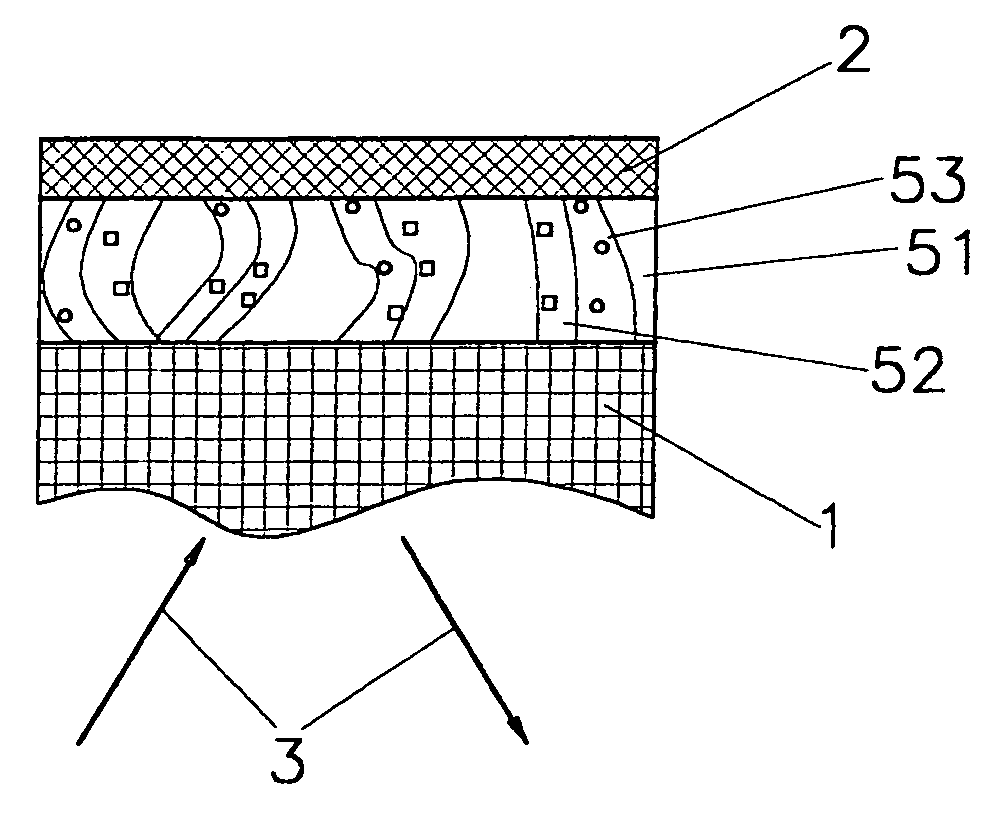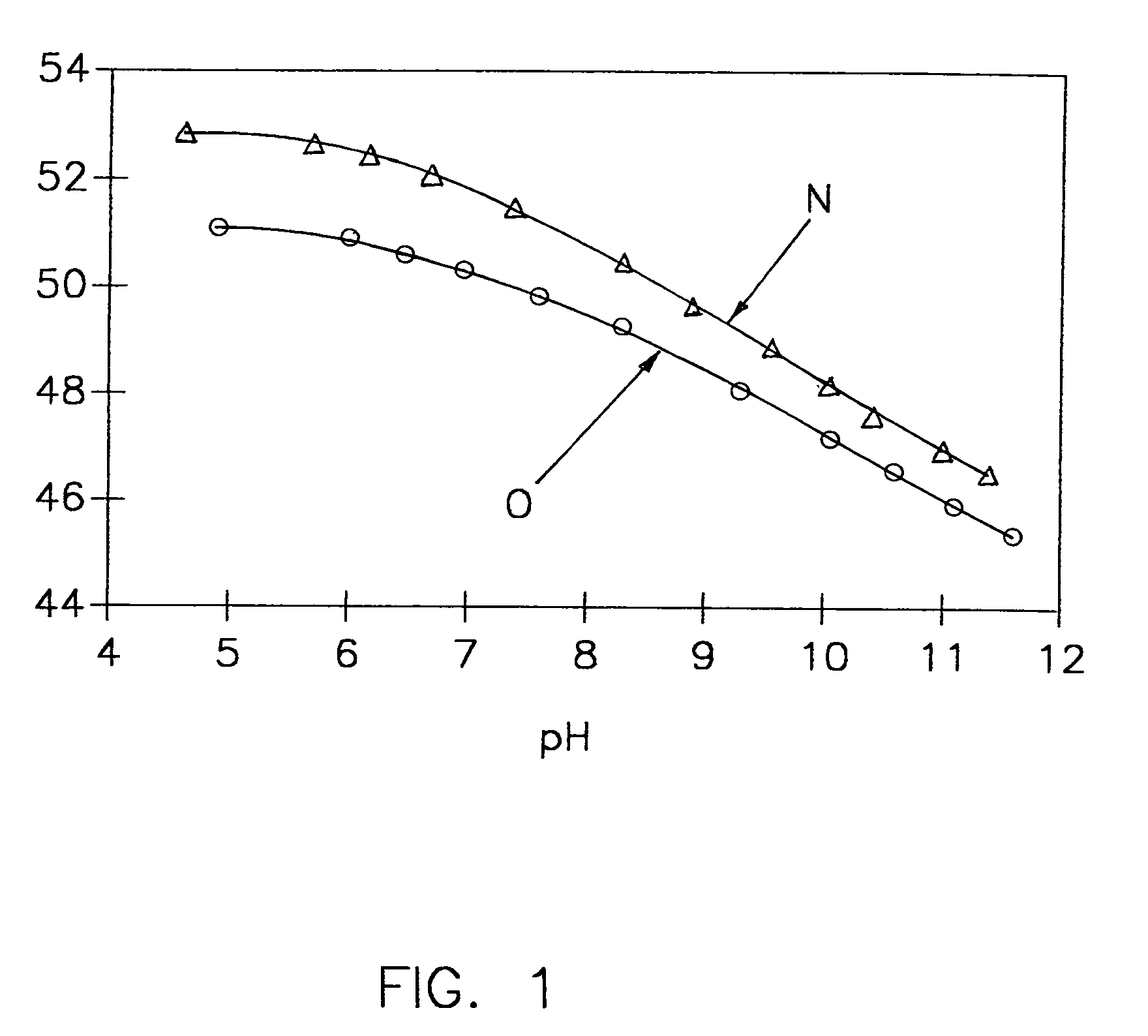Sensor for luminescense-optical determination of an analyte
a luminescense and optical determination technology, applied in the field of luminescenceoptical methods, can solve the problems of large synthesis effort, inability to produce covalent, and inability to achieve covalentity, etc., and achieve the effect of long luminescence decay time and high luminescence quantum efficiency
- Summary
- Abstract
- Description
- Claims
- Application Information
AI Technical Summary
Benefits of technology
Problems solved by technology
Method used
Image
Examples
example 1
[0123]This example shows that a donor dye which, according to the invention, is embedded in a donor phase exhibits less O2 sensitivity than the same dye being embedded in the acceptor phase.
[0124]General description of the preparation of nanoparticles with embedded donor dye
[0125]1.1 Embedding of a Donor Dye into an Acceptor Phase
[0126]mg donor dye Ru(diphphen)3TMS2 and 100 mg of the hydrophilic polymer D4 (polyurethane with hydrophilic sequences; Tyndale Plains Hunter LTD, Ringoes, N.J. 08551, USA) were dissolved in ethanol:water (90:10 w / w). The solution was drawn up a polyester foil (Mylar, Dupont) by knife application. After evaporation of the solvent, a film with a layer thickness of approximately 20 μm emerged.
[0127]
Measuring arrangement (45 kHz, blue LED, OG 570)Dry:air55.4°N2:58.3°Water:Air saturated:53.5°N2 saturated:58.4°
[0128]The measuring result shows that the donor dye Ru(diphphen)3 TMS2 being present “in unprotected fashion” in an acceptor phase exhibits an O2 sensitiv...
example 2 (
pH Sensor)
[0136]General Description of the Preparation of pH Functional Nanoparticles and a pH-Sensitive Layer
[0137]In a first step, a OH functional copolymer made up of acrylonitrile and an OH functional methacrylate is prepared. In a second step, nanoparticles containing embedded donor dye are produced from that polymer. In a third step, a pH-sensitive acceptor dye is covalently attached to the functional groups of the copolymer. In doing so, the acceptor dye is located predominantly in the “soft” hydrophilic regions (acceptor phase) of the particles, thus being accesible for ions. The donor dye is dissolved predominantly in the “hard” regions (donor phase), thus making it difficult for interfering substances to gain access. In a fourth step, the particles are suspended in a solution of a hydrophilic polymer, and the solution is deposited on a suitable carrier material. After evaporation of the solvent, a pH-sensitive sensor film emerges.
[0138]2.1 Preparation of the Copolymer
[0139...
PUM
 Login to View More
Login to View More Abstract
Description
Claims
Application Information
 Login to View More
Login to View More - R&D
- Intellectual Property
- Life Sciences
- Materials
- Tech Scout
- Unparalleled Data Quality
- Higher Quality Content
- 60% Fewer Hallucinations
Browse by: Latest US Patents, China's latest patents, Technical Efficacy Thesaurus, Application Domain, Technology Topic, Popular Technical Reports.
© 2025 PatSnap. All rights reserved.Legal|Privacy policy|Modern Slavery Act Transparency Statement|Sitemap|About US| Contact US: help@patsnap.com



